
About the Authors
Sophie D. Coe, an anthropologist and food historian, was the author of Americas First Cuisines.
Michael D. Coe, Charles J. MacCurdy Professor of Anthropology, Emeritus, Yale University, is the author of Royal Cities of the Ancient Maya, Breaking the Maya Code, The Maya, Mexico, Reading the Maya Glyphs and Final Report, all published by Thames & Hudson.
Other titles by Michael D. Coe published by
Thames & Hudson include:
Royal Cities of the Ancient Maya
Breaking the Maya Code (3rd edition also available as ebook)
Mexico (7th edition also available as ebook)
The Maya
Angkor and the Khmer Civilization
Other titles of interest published by
Thames & Hudson include:
The True History of Tea (also available as ebook)
Food: The History of Taste
The Flavours of Arabia
See our websites
www.thamesandhudson.com
www.thamesandhudsonusa.com
This book is dedicated to Alan Davidson
 CONTENTS
CONTENTS 
My late wife Sophie Dobzhansky Coe had been thinking about writing a history of chocolate for a long time, as an outcome of her general interest in the food and drink of the pre-Spanish peoples of the New World. Readers of her Americas First Cuisines (University of Texas Press, 1994) will have seen that an important place was given to chocolate in its three chapters on the Aztecs. However, she had been concentrating on chocolate and cacao (the plant from which chocolate is derived) as far back as 1988, when she gave a paper on The Maya Chocolate Pot and Its Descendants at the Oxford Symposium on Food and Cookery; she returned to the same forum again in 1992, when she spoke on chocolate flavorings in Mesoamerica.
The present book had taken shape in her mind in the previous year, by which time she had blocked out its eight chapters, which would take chocolate from its earliest pre-Columbian roots (now becoming better known through archaeology and its sister science, linguistics), up to modern times. Sophie was a stickler about going to the sources, and she spent many hundreds of hours in the libraries of America and Europe, tracking down all possible references to chocolateand vast amounts of time in my own Mesoamerican library. Her idea of heaven was working in an ancient library like her beloved Biblioteca Angelica in Rome, turning the pages of 400-year-old books in the search for chocolate data.
Sophie had a genuinely scientific background: she was the daughter of the noted Russian-American geneticist Theodosius Dobzhansky, and she had a doctorate in anthropology. Thus, she brought scientific rigor to her scholarship, and insisted that nothing be presented as fact that could not be backed up by solid data. The idea that food writing and food history could be scholarly was reinforced by the high standards set by the Oxford symposia, and by the culinary books authored by their guiding light, Alan Davidson, whom Sophie greatly admired.
I should say here that Sophie was also a great cook, at home not just in the Russian cuisine learned in her mothers kitchen, but in many other culinary traditions. Over the years she had amassed a remarkable cookbook library, now deposited with the Schlesinger Library at Radcliffe College in Cambridge, Massachusetts. When Sophie wrote about the food of other peoples, even people as exotic as the Aztecs, she wrote about something she usually knew at first hand and loved.
By the winter of 199394, she was slowed down in her research and writing by a painful disease, which was misunderstood by her doctors. What this was became all too clear the following March, when incurable cancer was diagnosed, and she was told that she had only a few months to live. With great courage, she tried to continue with the book, and even dictated to me some of the third chapter, but she had been able to write only preliminary versions of the first two chapters. She soon realized that she would never be able to complete her history. I promised her that I would do so, with the proviso that she would remain the senior author, since the book would be almost completely based on her research, not mine; and the idea and plan of the book were hers in the first place.
After Sophies death that May, I began work, faced with the not small task of organizing the thousands of pages of notes that she had left, and familiarizing myself with their contents. This took over six months, by the end of which I felt confident that I could put together the kind of chocolate history that she had envisioned. The major part of the writing took place at my farm in the Berkshire Hills of Massachusetts and in Rome. During my Rome stay, I was kindly assisted in many ways by my cousin Count Ernesto Vitetti, and by the library staff of the British School in that city.
I am deeply grateful for the forbearance and understanding of the staff at Thames & Hudson for seeing meand the bookthrough a difficult period. A number of colleagues provided me with critical information, as well as illustrations; I especially thank Alicia Ros, Nicholas Hellmuth, Chantal Coady, Justin Kerr, David Stuart, Miguel Len-Portilla, Stephen Houston, David Bolles, Denis Tedlock, and John Justeson. Alan Davidson was a true friend, from the very inception of the book, and Sophie and I were in complete agreement that we would dedicate it to him.
Finally, lest it be thought that it was some kind of burden or sacrifice for me to finish Sophies book, I want to state here that it was a true pleasure. When I was growing up on Long Islands North Shore, there was an inscription over the local high school that read Who dares to teach should never cease to learn. I have learned much from Sophie, even posthumously, while writing this history. Although I could never hope to duplicate the wry and ironic humor that enlivens her previous book, I hope that something of her wit and scholarship can be found in this one.
Much has changed in the chocolate world in the 17 years since this book was first published. When my wife and I started the project, we were not sure whether a history of such a pleasurable subject would be taken seriously in the academic world. In fact, there has been an amazing growth of scholarship about chocolates history, and an equally astounding increase in the appreciation of quality chocolate on the part of the publicnot just in North America and Europe, but around the world. In addition to those friends and colleagues mentioned in earlier editions, I would like to thank for their kind support and advice W. Jeffrey Hurst, John Clark, Cameron L. McNeil, Patricia Crown, Dorothy Washburn, and Sonia Zarrillo.
New to this edition are some tantalizing data on the first cultivation of the cacao tree in the northwest Amazon, and the discovery of chocolate-making in southern Mesoamerica, long before the Olmecs. Perhaps the most astonishing revelation in recent chocolate research is that the Anasazi and Hohokam peoples of the American Southwest were confirmed chocolate drinkers, stimulated by trade with the Toltecs of central Mexico. Chocolate has been giving up some of its secrets to modern neuroscientists, who have been investigating how flavor perception is mediated by the human brain. And, finally, we close with two contemporary accounts of how chocolate manufacturers, great and small, have (or have not) dealt with the ethical side of the industry.
Next page

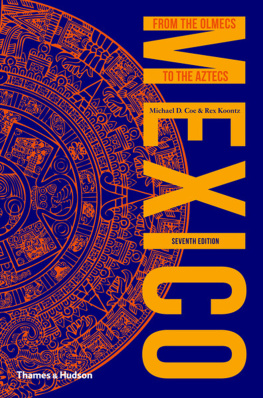
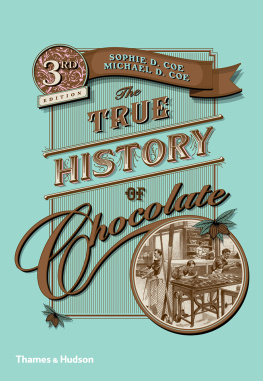

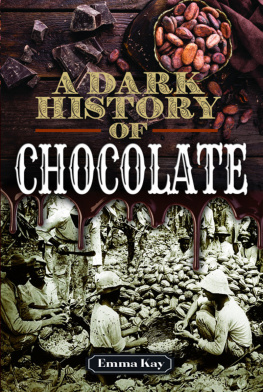
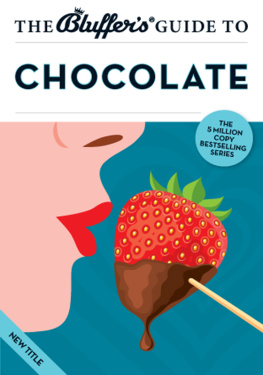

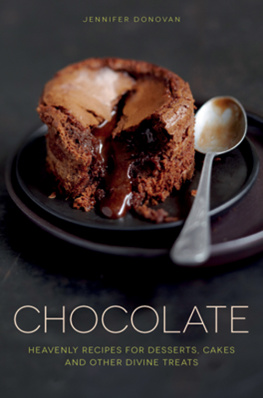
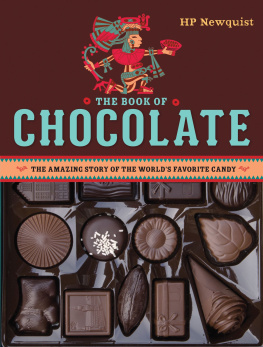
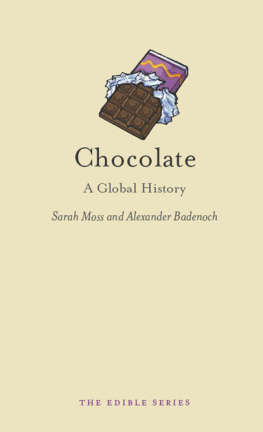
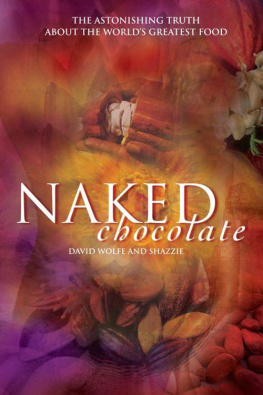


 CONTENTS
CONTENTS